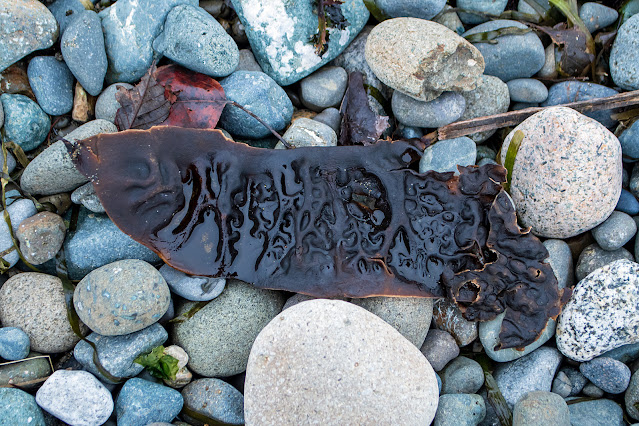At the end of the road, where the Bella Coola river meets the ocean, I went to explore the tide flats, to discover what lives there.
 |
| The river is that thin line to the right, the inlet is on the left. |
No two intertidal zones are alike. This one, though it is river meeting ocean, like the beaches I know on the lower mainland, is unlike any other I have visited. For one thing, though I turned over stones and logs, parted underwater grasses, I saw no snails, no crabs, no worm piles. And no eelgrass.
The river is glacier run-off, silty and cold. And Bentinck Inlet is long, narrow, and deep; though the tide runs up to the base of the hills, the river also runs far out to sea. The salinity is low. The currents are strong. The grasses on the tide flats are land-based grasses, not eelgrass. The only seaweeds are those the tide ripped up and dragged in; they don't live there.
 |
| This whole area is covered by the tide. Plants growing here are moderately salt-tolerant. |
Besides several varieties of tough grasses, I found silverweed, blue sailor, and yellow gumweed, all in the area that is covered by salty water twice daily.
 |
| The tide rushing in, laying the grasses flat. |
 |
| Rockweed tossed on top of the flattened grasses. A few leaves of silverweed poke through the grass. |
Deep in the channel, where the water is heavier and saltier, there are crabs and anemones, sea cucumbers and starfish, all out of reach without diving gear. The tide flats are home to plants, birds, and flies, come to feed on dead salmon. And if I'd been carrying a shovel, maybe I'd have found worms.























